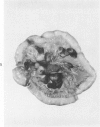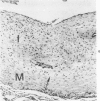Abstract
A new strain of rat characterized by genetic obesity, endogenous hyperlipidemia, and hypertension was obtained in this laboratory. The abnormal phenotype is inherited as a homozygous recessive trait. The animals exhibit marked hypertriglyceridemia, moderate hypercholesterolemia, and an electrophoretic pattern resembling that of human Type IV hyperlipoproteinemia. The average life-span is less than 1 year, due largely to the development of premature renal and vascular disease. The kidney lesion has both glomerulonephritic and nephrosclerotic components and is accompanied by marked proteinuria. About 12% of animals develop urinary tract calculi. The vascular disease consists of fibrous and fatty-fibrous intimal plaques, and polyarteritis. The obese animal offers a useful model for investigating abnormal lipid metabolism and the etiology and pathogenesis of atherosclerosis.
Full text
PDF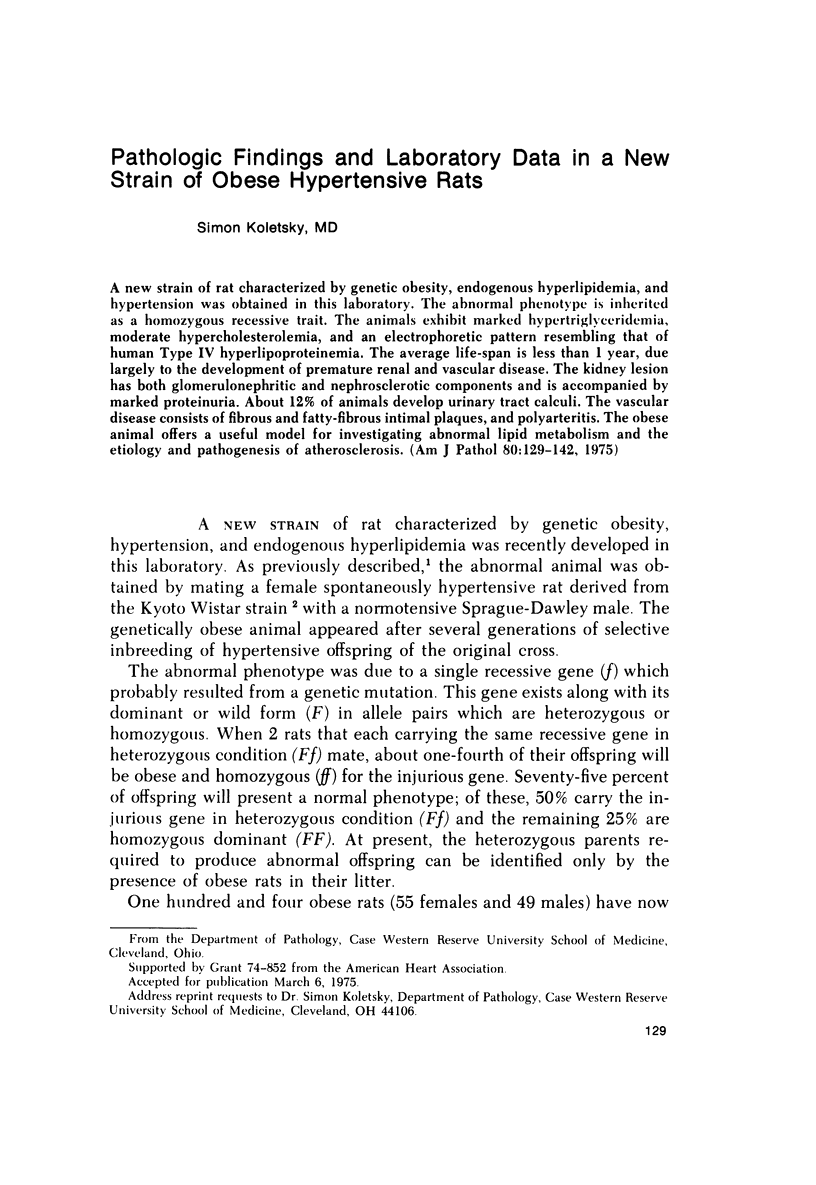
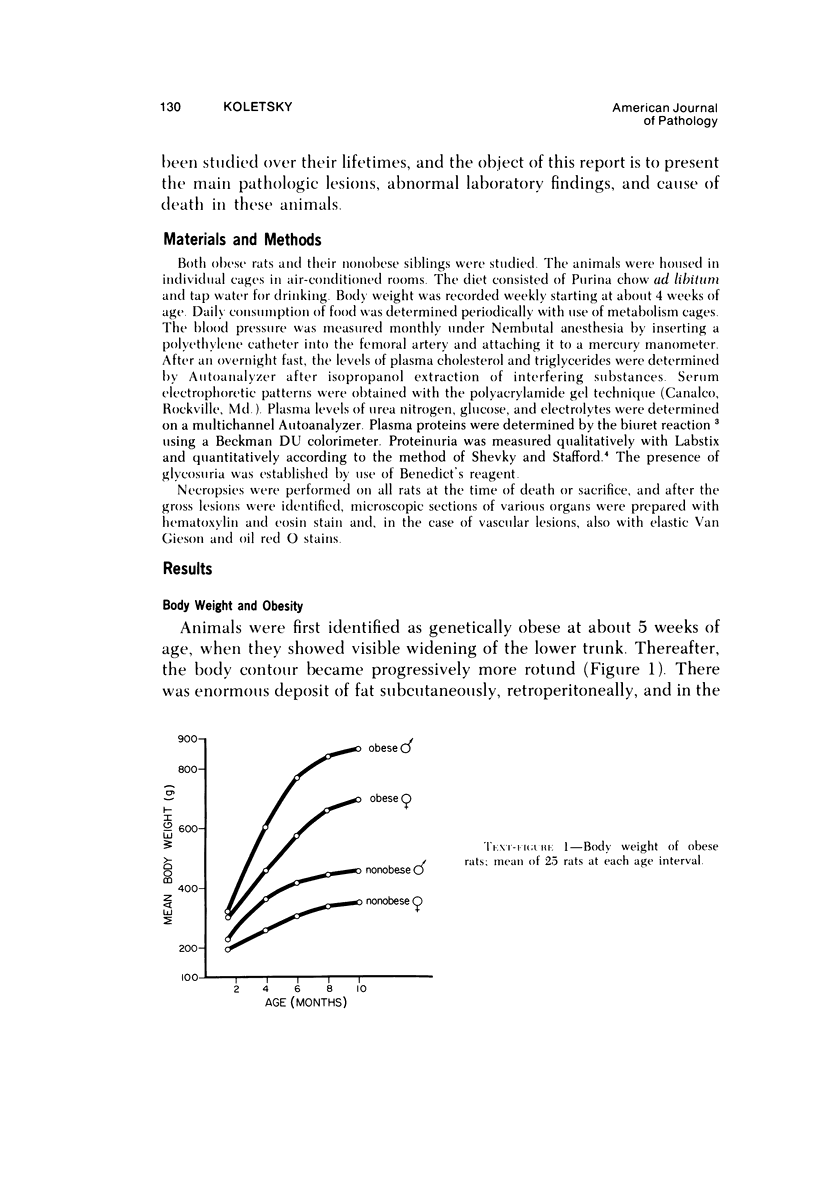
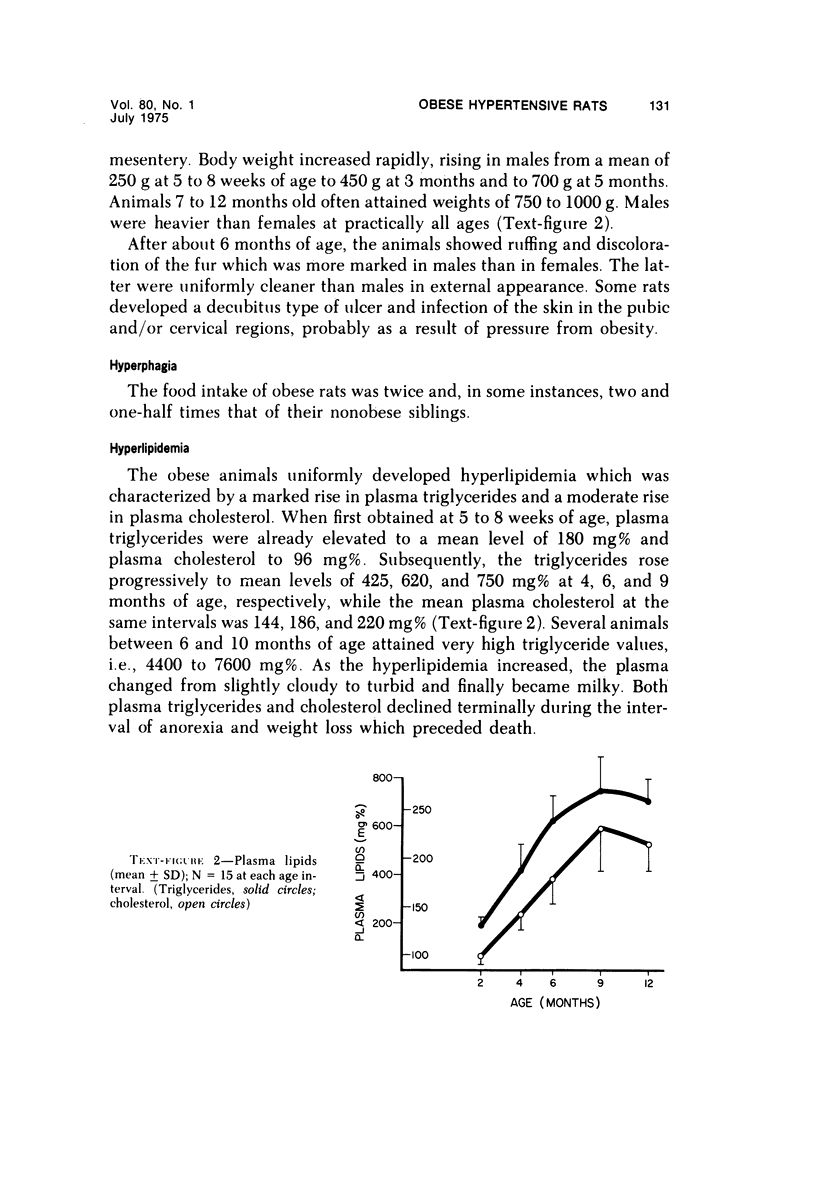
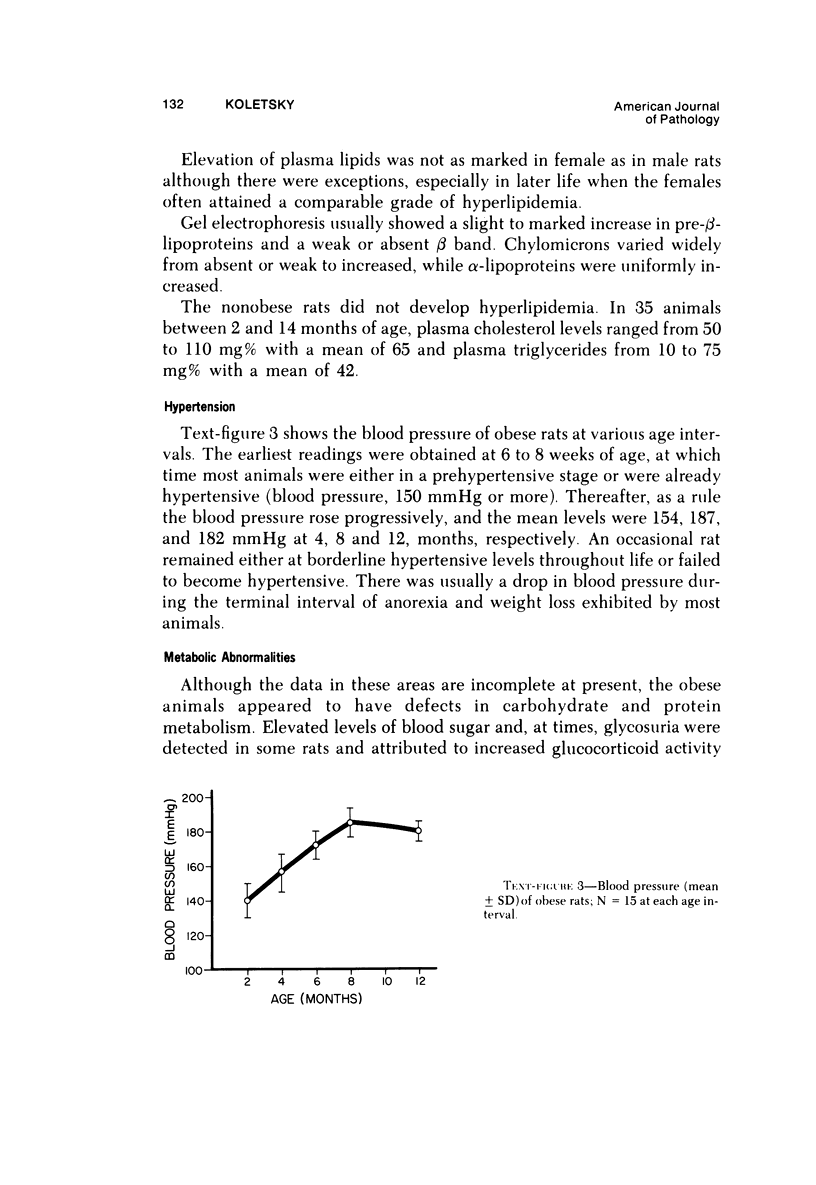
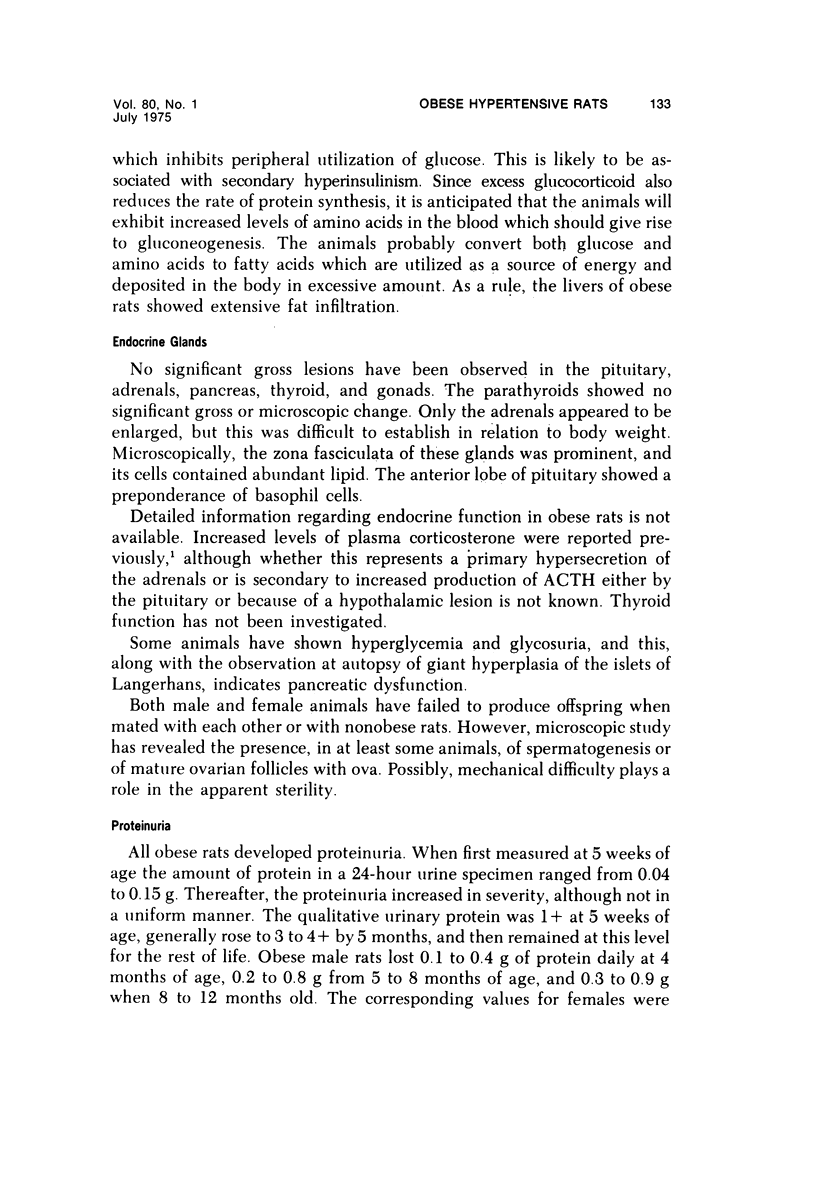
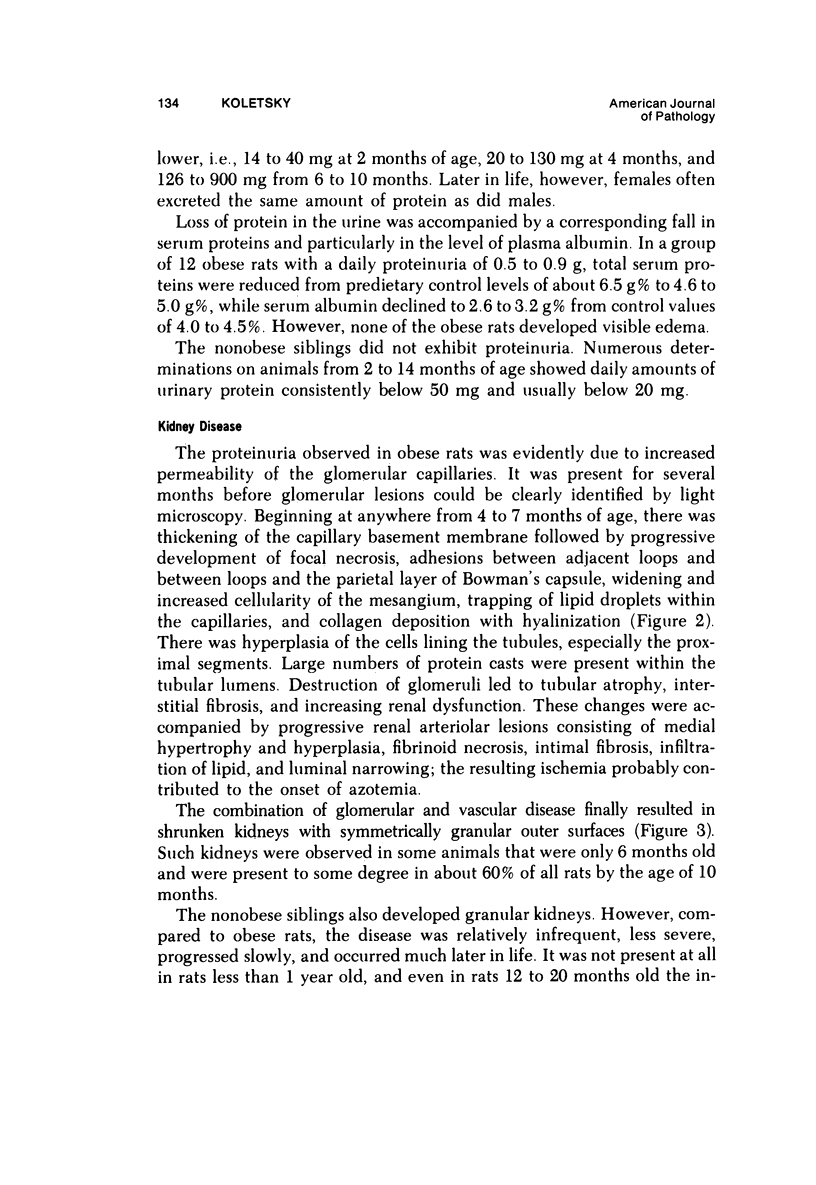
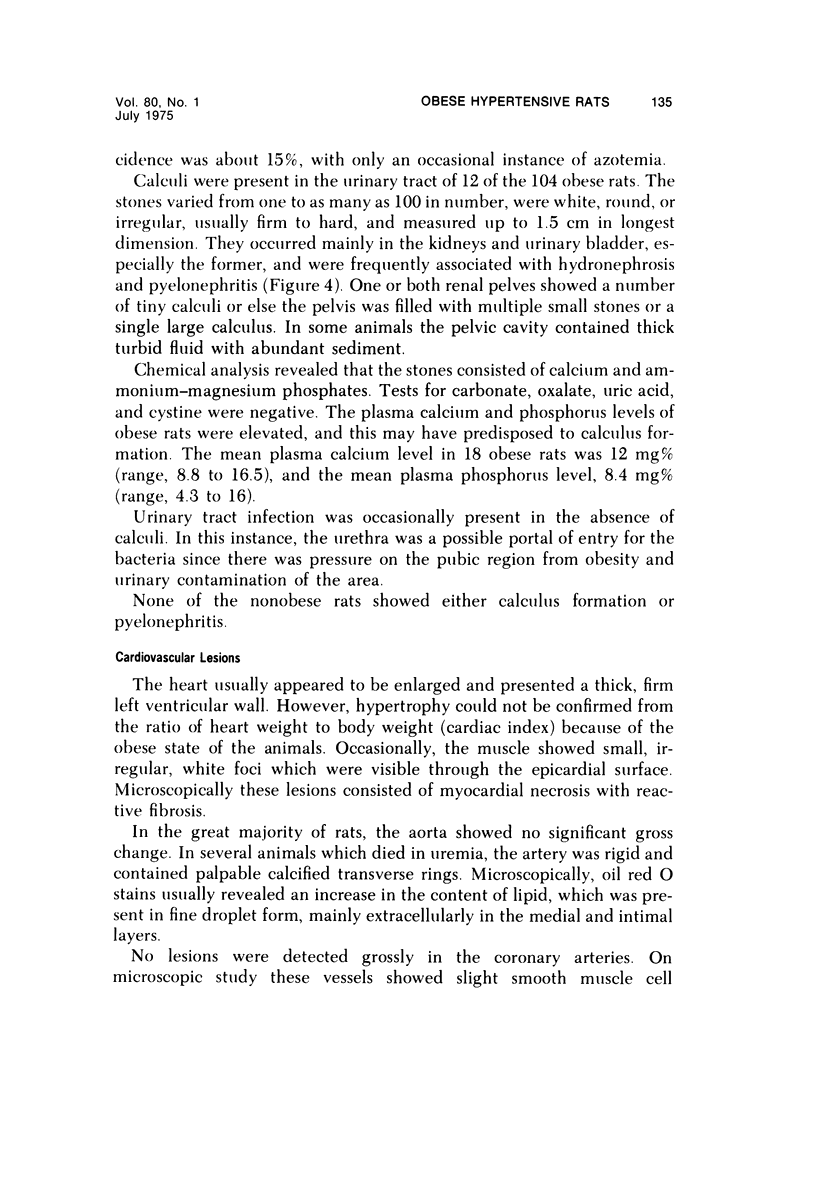
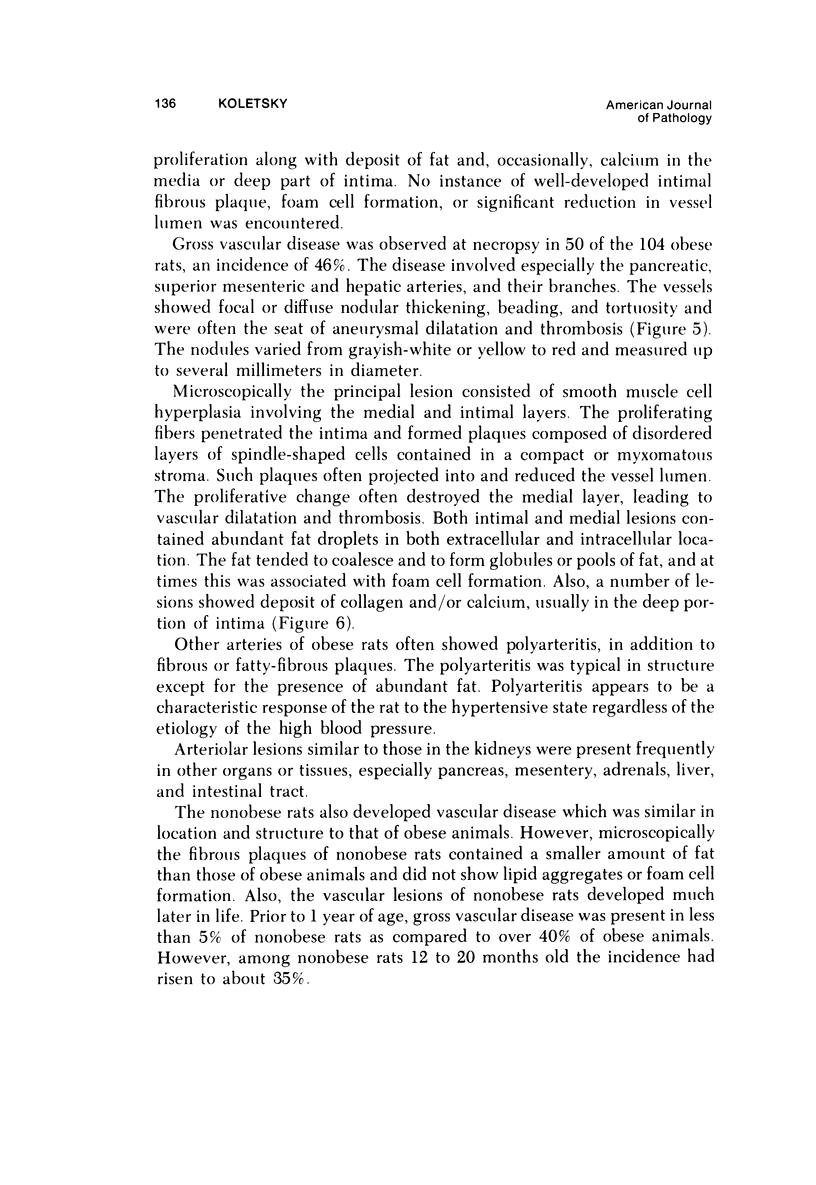
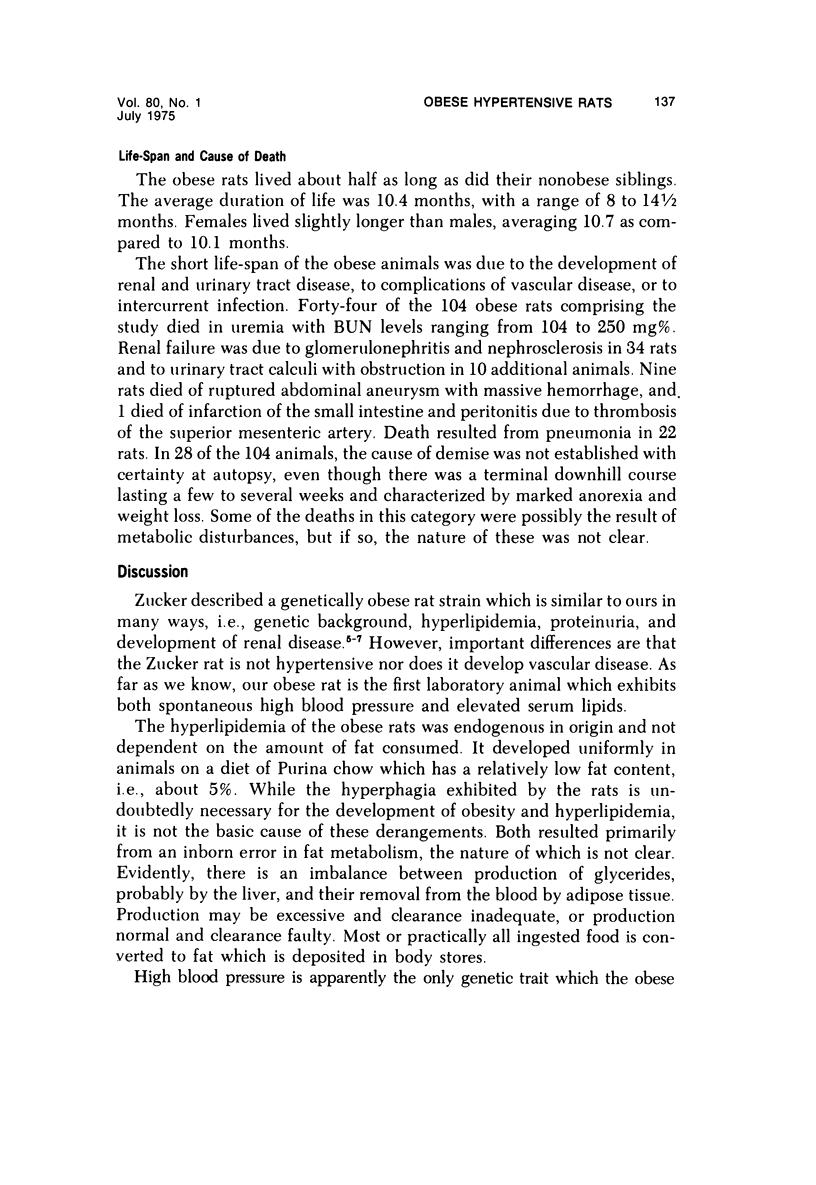
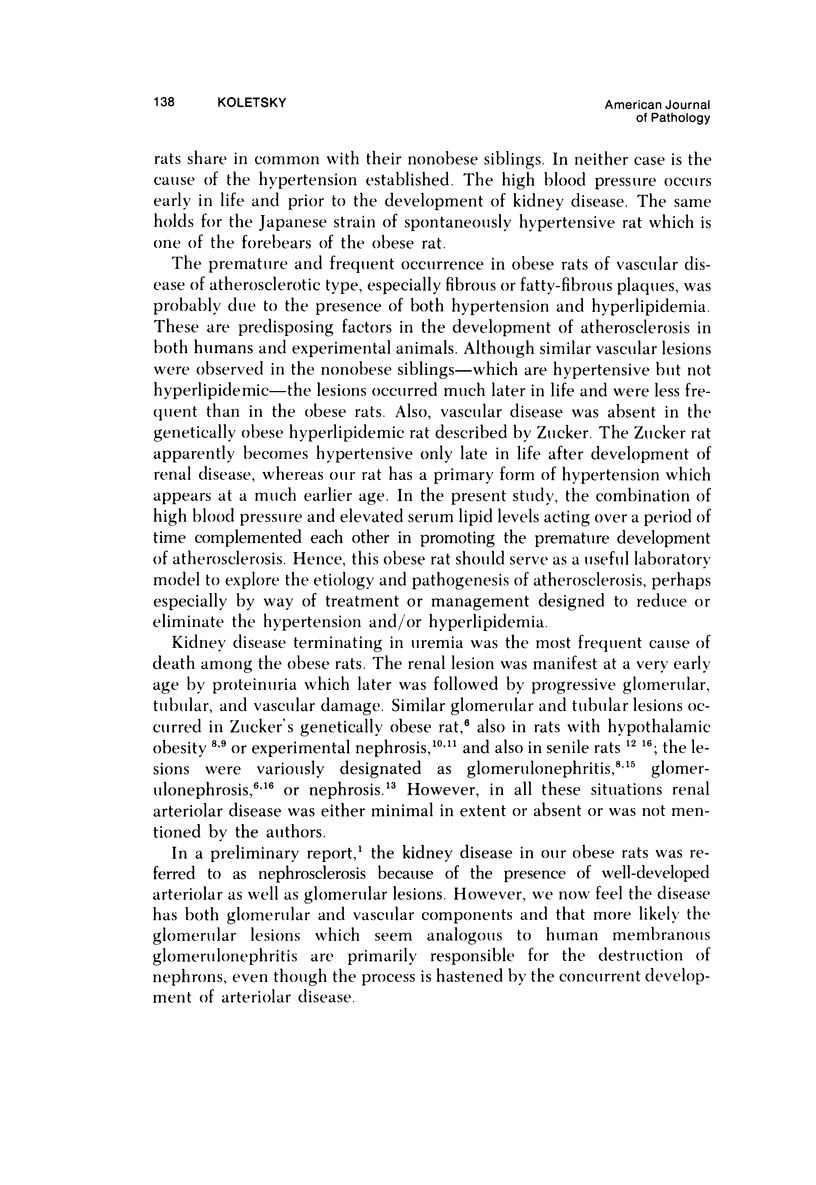
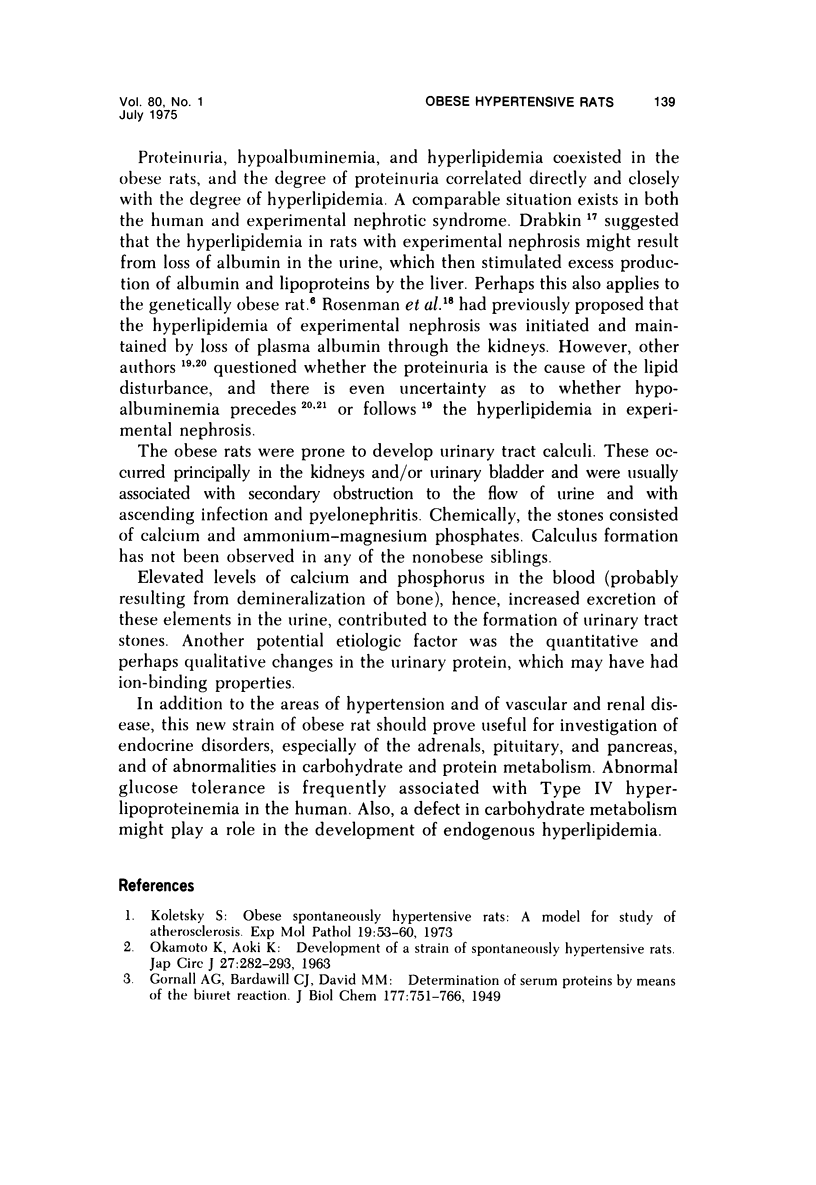
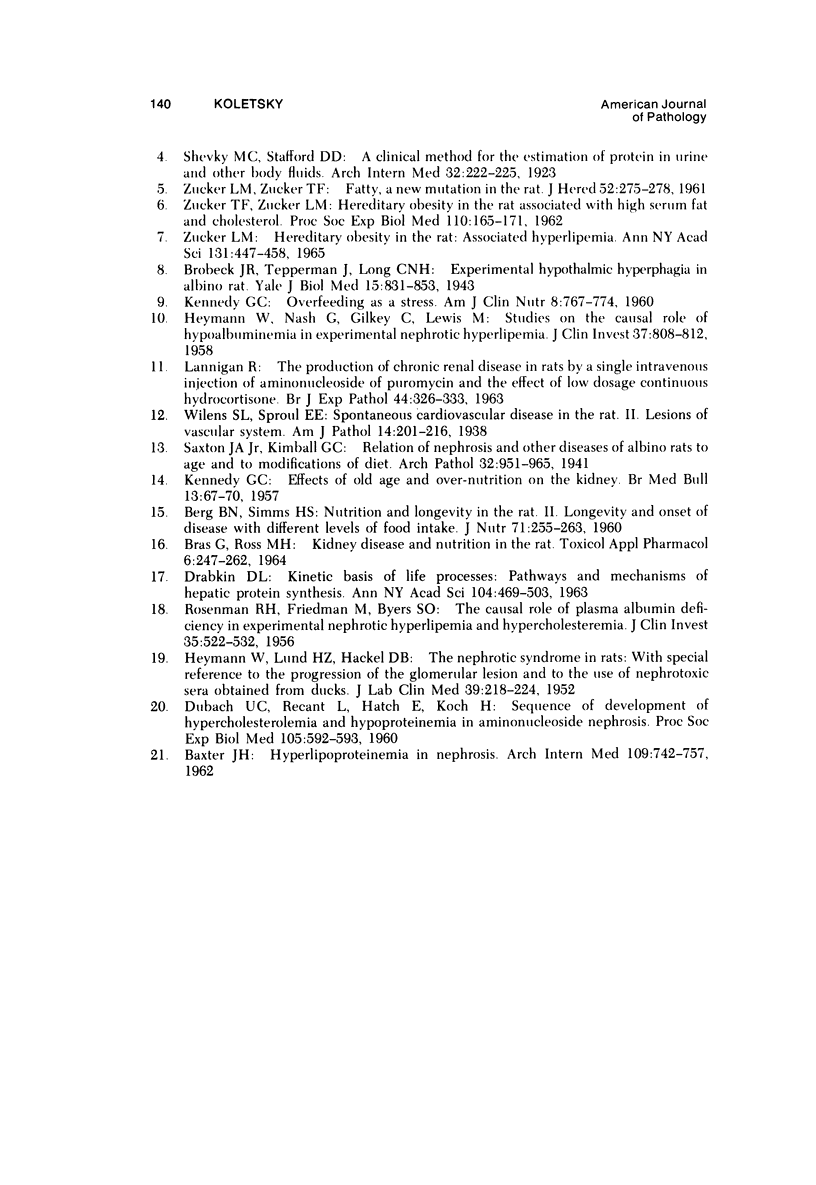
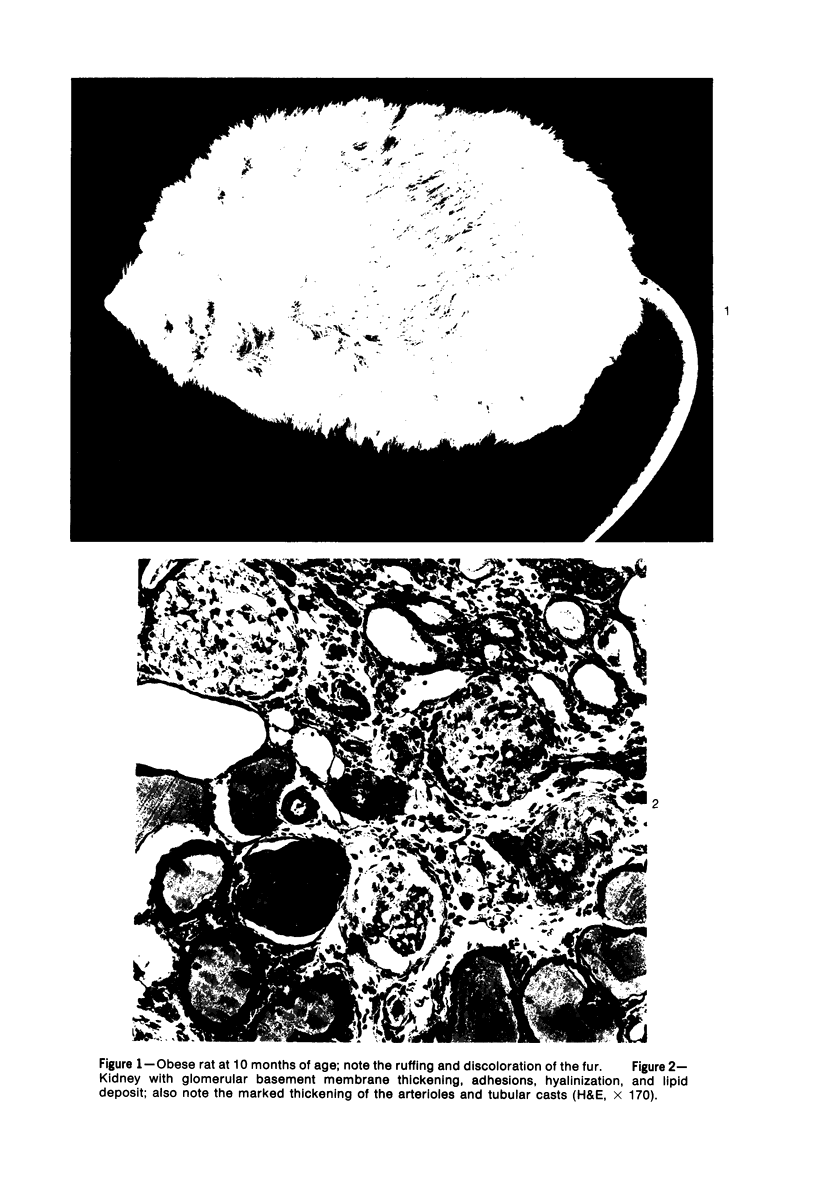
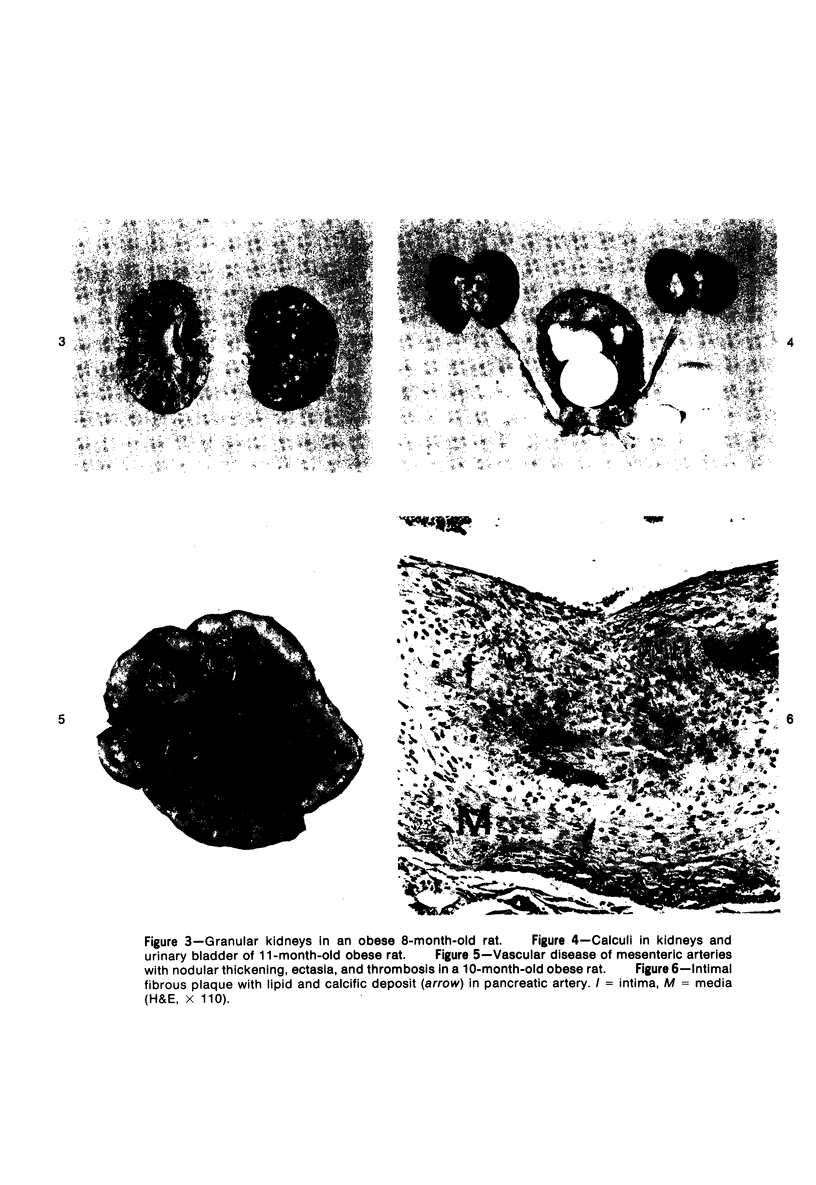
Images in this article
Selected References
These references are in PubMed. This may not be the complete list of references from this article.
- BAXTER J. H. Hyperlipoproteinemia in nephrosis. Arch Intern Med. 1962 Jun;109:742–757. doi: 10.1001/archinte.1962.03620180104012. [DOI] [PubMed] [Google Scholar]
- BERG B. N., SIMMS H. S. Nutrition and longevity in the rat. II. Longevity and onset of disease with different levels of food intake. J Nutr. 1960 Jul;71:255–263. [PubMed] [Google Scholar]
- BRAS G., ROSS M. H. KIDNEY DISEASE AND NUTRITION IN THE RAT. Toxicol Appl Pharmacol. 1964 May;6:247–262. doi: 10.1016/0041-008x(64)90065-1. [DOI] [PubMed] [Google Scholar]
- DUBACH U. C., RECANT L., HATCH E., KOCH M. Sequence of development of hypercholesterolemia and hypoproteinemia in aminonucleoside nephrosis. Proc Soc Exp Biol Med. 1960 Dec;105:592–593. doi: 10.3181/00379727-105-26187. [DOI] [PubMed] [Google Scholar]
- HEYMANN W., LUND H. Z., HACKEL D. B. The nephrotic syndrome in rats; with special reference to the progression of the glomerular lesion and to the use of nephrotoxic sera obtained from ducks. J Lab Clin Med. 1952 Feb;39(2):218–224. [PubMed] [Google Scholar]
- HEYMANN W., NASH G., GILKEY C., LEWIS M. Studies on the causal role of hypoalbuminemia in experimental nephrotic hyperlipemia. J Clin Invest. 1958 Jun;37(6):808–812. doi: 10.1172/JCI103668. [DOI] [PMC free article] [PubMed] [Google Scholar]
- KENNEDY G. C. Effects of old age and over-nutrition on the kidney. Br Med Bull. 1957 Jan;13(1):67–70. doi: 10.1093/oxfordjournals.bmb.a069575. [DOI] [PubMed] [Google Scholar]
- Koletsky S. Obese spontaneously hypertensive rats--a model for study of atherosclerosis. Exp Mol Pathol. 1973 Aug;19(1):53–60. doi: 10.1016/0014-4800(73)90040-3. [DOI] [PubMed] [Google Scholar]
- LANNIGAN R. The production of chronic renal disease in rats by a single intravenous injection of aminonucleoside of puromycin and the effect of low dosage continuous hydrocortisone. Br J Exp Pathol. 1963 Jun;44:326–333. [PMC free article] [PubMed] [Google Scholar]
- OKAMOTO K., AOKI K. Development of a strain of spontaneously hypertensive rats. Jpn Circ J. 1963 Mar;27:282–293. doi: 10.1253/jcj.27.282. [DOI] [PubMed] [Google Scholar]
- ROSENMAN R. H., FRIEDMAN M., BYERS S. O. The causal role of plasma albumin deficiency in experimental nephrotic hyperlipemia and hypercholesteremia. J Clin Invest. 1956 May;35(5):522–532. doi: 10.1172/JCI103305. [DOI] [PMC free article] [PubMed] [Google Scholar]
- Wilens S. L., Sproul E. E. Spontaneous cardiovascular disease in the rat: II. Lesions of the Vascular System. Am J Pathol. 1938 Mar;14(2):201–216.5. [PMC free article] [PubMed] [Google Scholar]
- Zucker L. M. Hereditary obesity in the rat associated with hyperlipemia. Ann N Y Acad Sci. 1965 Oct 8;131(1):447–458. doi: 10.1111/j.1749-6632.1965.tb34810.x. [DOI] [PubMed] [Google Scholar]







